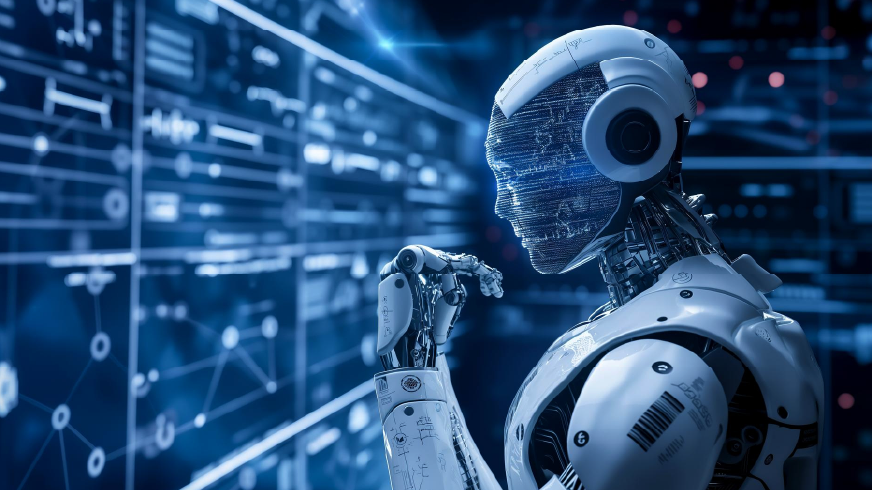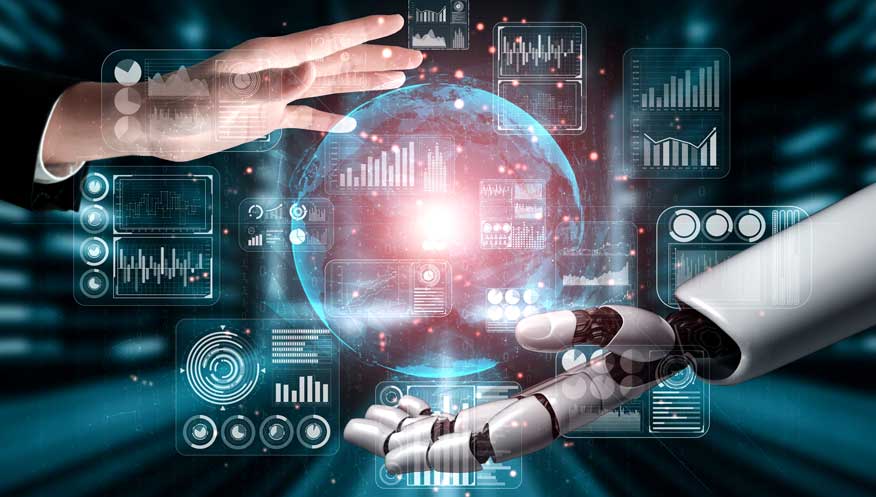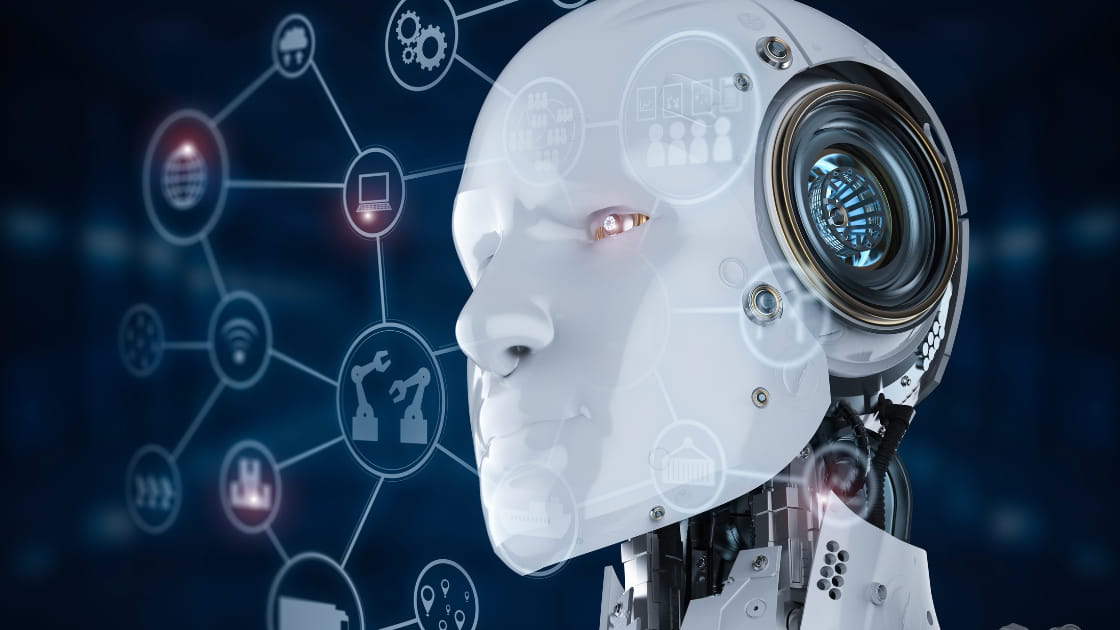
Subscribe to our free Newsletter
💌 Stay ahead with AI and receive:
✅ Access our Free Community and join 400K+ professionals learning AI
✅ 35% Discount for ChatNode
Welcome to The AI Report!
.png)

Manus AI Agent: Revolutionary Mind-to-Action Tech 2025
Discover Manus AI Agent - the autonomous system that transforms your thoughts into actions. Experience hands-free productivity in work and life.


Autonomous AI Agents: The Evolution Toward Mind-to-Action Computing
The artificial intelligence landscape is experiencing a fundamental shift toward autonomous action. While traditional AI systems require constant human guidance, a new generation of agents is emerging that can independently plan, execute, and complete complex tasks. This evolution represents what researchers call "mind-to-action" computing—a paradigm where human intent seamlessly translates into automated execution without the friction of manual intervention.
Understanding Autonomous AI Agents: The Next Evolution in Computing

What Makes Modern AI Agents Revolutionary
Modern AI agents distinguish themselves through genuine autonomy rather than sophisticated assistance. Unlike conventional AI tools that respond to prompts, these systems independently orchestrate multi-step workflows, making decisions and adjusting strategies as situations evolve. Users can disconnect entirely while agents continue working in the cloud, executing complex tasks asynchronously.
This autonomous capability stems from advanced multi-agent architecture where specialized sub-agents collaborate to tackle different aspects of a problem simultaneously. The system doesn't just follow instructions—it actively plans, problem-solves, and adapts its approach based on real-time feedback and environmental changes.
Enterprise deployments demonstrate this capability in practice. Amazon migrated tens of thousands of production apps from Java 8/11 to Java 17 using autonomous developer agents, completing upgrades that would typically take months in a fraction of the usual time. Similarly, Rocket Mortgage processes 10 PB of financial data through agents that provide tailored mortgage recommendations in real time.
Core Philosophy Behind Mind-to-Action Computing
Traditional mind-to-action technology emerged from brain-computer interface research, where systems decode neural activity to control external devices directly. Leading implementations like Neuralink's N1 implant records neural activity and enables paralyzed users to control computer cursors through thought alone. Similarly, Stanford's BrainGate research achieved high-rate text entry by decoding motor cortex signals in real-time.
Software agents adapt this philosophy for digital automation, creating a direct pathway from human intention to digital action. Rather than requiring users to manually navigate through multiple applications and interfaces, these systems interpret goals and execute them autonomously across various platforms and tools.
However, AI researchers caution about current limitations. AAAI's 2025 community survey reports that misalignment between general LLM competence and specific system needs (59.88%) and lack of interpretability (59.28%) remain top barriers to effective deployment. This creates a gap between the promise of seamless mind-to-action computing and practical implementation challenges.
Multi-Agent Architecture: The Technical Foundation

Distributed Intelligence System Design
Modern agent platforms operate through sophisticated distributed architectures that mirror how human teams tackle complex projects. Multiple specialized agents work concurrently, each optimized for specific functions like research, analysis, code generation, or content creation. This design enables parallel processing that dramatically improves both speed and accuracy compared to single-agent systems.
Recent research highlights how modular, role-specialized multi-agent pipelines outperform single agents on complex tasks by decomposing problems and running sub-tasks in parallel. The architecture enforces structured communication between agents while maintaining focused expertise within each component.
At Genentech, autonomous research agents decompose complex scientific tasks into dynamic multi-step workflows, using retrieval-augmented generation across multiple knowledge bases and executing complex queries via internal APIs. This reduces time-to-target identification and accelerates drug discovery innovation.
Agent Coordination and Communication Protocols
Effective coordination between specialized agents requires sophisticated communication protocols that prevent information overflow while ensuring critical data reaches the right components. Modern platforms implement publish-subscribe architectures where agents selectively receive relevant information rather than processing everything.
Contemporary multi-agent frameworks have adopted shared memory abstractions and role-specific channels to enable coordination without flooding communication channels. This approach allows knowledge reuse and cross-checking across the system while maintaining performance efficiency.
The coordination layer includes validator agents that review outputs from other components, implementing consensus patterns to detect failures and verify results. This multi-layered verification significantly reduces hallucinations and improves overall system reliability.
Performance Challenges and Limitations
Despite architectural advantages, complex multi-tool agents often do not outperform simple baselines while incurring significantly higher cost and latency. Some agent runs take over 2 hours, while others fail to terminate after 5 hours, highlighting the challenge of balancing capability with reliability.
Cloud-based deployment enables dynamic scaling based on workload complexity, automatically allocating additional computational resources during intensive operations while maintaining cost efficiency during lighter tasks. However, organizations must carefully balance autonomy with oversight to manage these performance trade-offs effectively.
Real-Time Transparency and Observable AI Behavior

The Transparency Challenge in Autonomous Systems
Transparency remains a critical challenge for autonomous AI systems. A 2024 empirical study analyzing 54 AI systems found consistently low levels of transparency, particularly in high-stakes deployments. Modern agent platforms address this through comprehensive real-time monitoring that makes every action visible to users.
Advanced interfaces display ongoing processes in intuitive visual formats, showing how agents navigate between applications, process information, and make decisions. Users can observe the reasoning behind each step, building confidence in autonomous operation.
IBM researchers emphasize that today's agents are essentially LLMs granted action permissions, which raises amplified risks such as accidental data deletion or leakage. This makes transparency, traceability of every action, and human accountability non-negotiable requirements.
User Control and Intervention Capabilities
While autonomy provides value, users need intervention capabilities when circumstances change or unexpected situations arise. Modern platforms provide granular control mechanisms that allow immediate pause, redirection, or cancellation of ongoing workflows.
Recent research emphasizes that explainability must enable stakeholders to understand and challenge outputs in real-time contexts. Effective platforms implement this through interactive controls that let users modify goals, adjust parameters, or provide additional context mid-execution.
The intervention system maintains context across interruptions, allowing users to guide agents toward better solutions without losing progress on complex multi-step tasks.
Building Trust Through Observable Decision-Making

Trust in autonomous systems develops through consistent, predictable behavior and clear communication of limitations. Effective agent platforms center on demystifying AI decision-making through comprehensive observability.
Unlike black-box systems that provide final outputs without explanation, transparent platforms expose the complete decision tree, alternative options considered, and confidence levels for each choice. Users develop intuition about when the system performs well and where human oversight adds value.
Advanced Session Management and Learning Systems
Recording and Analyzing AI Decision Processes
Every interaction with sophisticated agent platforms generates comprehensive session logs that capture not just final outcomes but the complete decision-making process. This approach reflects growing industry emphasis on reinforcement learning with human feedback via decision logs for continuous improvement.
Session recordings include all agent communications, tool interactions, decision points, and intermediate results. This granular documentation enables thorough analysis of system behavior and supports compliance requirements in regulated industries.
Advanced agent frameworks increasingly emphasize persistent memory stores to carry information across sessions and enable more sophisticated multi-turn behavior, learning from historical patterns to improve future performance.
Learning from Enterprise Deployments
Enterprise implementations provide valuable insights into real-world performance patterns. Allen & Overy deployed Harvey across 3,500 lawyers in 43 offices, processing 40,000 daily queries for research, drafting, and due diligence assistance. This scale of deployment generates significant learning data about effective agent behavior in professional contexts.
Singapore's GovTech demonstrates sustained learning through VICA's handling of 800,000+ monthly citizen inquiries across 60+ agencies. The system continuously improves from live interactions while centralizing common capabilities for government agencies.
Performance Benchmarks and Current Capabilities

Measuring Agent Performance in Practice
Recent benchmark improvements demonstrate the rapid advancement of underlying AI capabilities that power agent platforms. AI systems improved from solving 4.4% to 71.7% of software engineering issues between 2023 and 2024, while multimodal reasoning accuracy improved by 18.8 percentage points in the same period.
Graduate-level reasoning accuracy advanced by 48.9 percentage points year-over-year, though challenges remain. On VisualAgentBench, top systems like GPT-4o show ~36.2% success, while many proprietary models achieve around 20%, underscoring the difficulty of multi-modal, tool-use agent tasks.
Current Benchmark Standards and Evaluation Methods
There is no single, standardized set of enterprise performance benchmarks for leading agent platforms in 2024-2025. Published, comparable metrics vary by use case and are typically reported via domain benchmarks like AgentBench, WebArena, and REALM-Bench rather than head-to-head platform comparisons.
AgentBench evaluates multi-turn decision-making and tool-use across operating systems, databases, and web shopping environments, testing agents' reasoning and planning over 5-50 turns. WebArena measures autonomous web task completion in realistic domains like e-commerce and content management systems.
For enterprise evaluation, current practice measures against production KPIs such as deflection/containment rates (typically 43% to 75% in routine tasks), self-service resolution, and reliability convergence rather than relying on platform-level marketing numbers.
Real-World Performance Validation
Enterprise deployments provide the most meaningful performance validation. Organizations report significant productivity gains, including 95% fewer emails during contract negotiations and 70% faster navigation time in complex workflows.
Industrial applications show efficiency improvements and reduced downtime when AI agents manage engineering workflows, while 35% productivity increases have been reported across HR, finance, marketing, and legal teams using enterprise AI agents.
Current Expert Perspectives on Limitations and Challenges

Research Community Assessment of Mind-to-Action AI
AI researchers in 2024-2025 broadly agree that autonomous agents are progressing from chatbots to task-taking systems, but remain constrained by safety, reliability, and alignment limits that prevent fully trusted autonomy in high-stakes settings. McKinsey reports that enterprise agents can hold conversations, plan follow-up steps, and execute bounded workflows, but organizations hold back broader autonomy due to safety and governance gaps.
AAAI's 2025 community survey reports rising adoption of LLM-based agents and strong interest in multi-agent systems for collaboration. However, misalignment with task-specific needs, lack of interpretability, and security risks are identified as top blockers to effective deployment.
Industry Risk Assessment and Safety Concerns
US employees rank cybersecurity (51%), inaccuracies (50%), and privacy (43%) among top concerns for workplace generative AI adoption. IBM researchers caution that granting action permissions to LLMs amplifies risks, making transparency and human accountability essential requirements.
Experts emphasize end-to-end action logging, auditability, and fine-grained permissioning to manage mind-to-action execution. The technology "can do things in a lot less time," so errors scale fast and require robust guardrails and human responsibility structures.
Current Deployment Patterns and Best Practices
Leaders face a speed-versus-safety dilemma: they want to accelerate agent adoption but are constrained by data security, accuracy, bias, and compliance obligations in real workplaces. This has led to conservative deployment patterns prioritizing human oversight.
Experts see near-term progress in human-in-the-loop and human-on-the-loop patterns, with scoped permissions, stepwise plans, explicit approvals for irreversible operations, and comprehensive audit trails. Narrow, well-specified domains where tasks, data, and failure modes are tightly constrained show the most promise for reducing misalignment and security exposure.
Industry Applications and Proven Use Cases

Enterprise Automation Success Stories
The most successful enterprise deployments focus on specific, bounded workflows where agents can operate with clear constraints and measurable outcomes. Amazon's autonomous developer agents demonstrate large-scale production success, completing Java upgrades that yield performance improvements and cost savings across the organization.
Rocket Mortgage's implementation aggregates massive datasets and provides tailored recommendations in real time, showing end-to-end workflow automation on highly regulated, data-heavy processes with direct customer experience and efficiency gains.
Enterprise platforms typically employ seat-based subscriptions combined with usage-based billing that scales with interaction volume, with professional plans ranging from $500-1000 monthly and custom enterprise pricing above $2000 monthly for high-volume deployments.
Specialized Industry Implementations
Genentech's research agents automate time-consuming literature and data search validation steps, demonstrating adaptive, multi-agent scientific workflows beyond simple task automation with tangible cycle-time reduction in R&D discovery activities.
Legal technology shows significant scale with Allen & Overy's deployment processing thousands of daily queries for document research, drafting assistance, and due diligence support. This represents rare, quantified large-scale legal adoption with clear workload displacement from manual research to agent-assisted flows.
Government implementations like Singapore's VICA demonstrate sustained volume handling at population scale, serving as a government-grade, multi-agency platform with measurable deflection and service improvement metrics.
Competitive Landscape and Technology Differentiation

Current Market Dynamics
The competitive landscape for AI agents has evolved rapidly, with the performance gap between open and closed models narrowing from 8.04% in January 2024 to just 1.70% by February 2025. This convergence provides more options for agent platforms without sacrificing performance.
Global competition includes significant innovation from Chinese AI companies that benefit from substantial computing resources. China accounts for 26% of global computing power and has 117 generative AI products approved for market rollout, creating competitive pressure that drives innovation while reducing costs.
Platform Differentiation Strategies
Leading platforms differentiate through reliability, transparency, and integration capabilities rather than raw performance metrics. Benchmark comparisons using WebArena and AgentBench evaluate multi-turn planning across complex environments, providing better insight into real-world performance than single-task metrics.
Enterprise adoption requires platforms that balance autonomous operation with appropriate oversight and intervention capabilities. Organizations increasingly prioritize explainable AI behavior, comprehensive audit trails, and integration with existing business systems over pure automation capabilities.
Security, Privacy, and Compliance Considerations

Current Security Frameworks and Requirements
Enterprise adoption demands robust security measures that protect sensitive data while enabling powerful automation capabilities. Modern platforms implement multiple layers of security including encrypted communication, secure credential management, and granular access controls.
Security risks are cited by half the research community and represent a leading workforce concern. Accidental data leakage, deletion, and misuse require careful model and data selection plus tight access policies to manage deployment risks effectively.
Privacy safeguards ensure that session data remains under user control with clear policies governing data retention, sharing, and deletion. Users can operate in private modes that minimize data collection while maintaining functionality.
Compliance and Governance Challenges
Governance frameworks are proliferating and evolving, creating a moving compliance target and potential fragmentation that complicates deploying action-taking agents across jurisdictions. This regulatory uncertainty slows enterprise adoption in heavily regulated industries.
Compliance features must support regulatory requirements across different industries and jurisdictions, enabling adoption while managing legal and operational risks. Organizations need clear accountability frameworks for autonomous agent decisions and actions.
Future Outlook and Development Trajectory

Technology Evolution and Capabilities
The development trajectory focuses on expanding tool integrations, enhancing multi-modal capabilities, and improving user customization options. Planned advances aim to increase autonomy while maintaining transparency and user control requirements.
Research into multi-agent collaboration for complex problem solving and distributed decisions continues, paired with better alignment strategies and interpretability to curb emergent errors and deception risks in autonomous systems.
Performance optimizations will reduce latency and improve resource efficiency, enabling more responsive interactions and lower operational costs for high-volume applications across enterprise environments.
Market Growth and Adoption Patterns
Strategic partnerships with enterprise software providers will expand native integration options and reduce setup complexity for common business applications. The goal involves seamless operation across diverse technology stacks without requiring extensive custom integration work.
Outcome-based pricing models are increasingly common, linking costs to realized value rather than usage metrics alone. This approach aligns vendor incentives with customer success and reduces adoption risk for organizations evaluating agent technology.
Long-term Vision and Industry Impact
The ultimate vision involves establishing autonomous agents as standard components of digital workflows, enabling seamless translation of human intent into automated action across business processes. However, experts urge caution about fully hands-off autonomy without stronger alignment, interpretability, and security safeguards.
Agents are moving from talk to action in constrained enterprise workflows, but current implementations remain bounded and supervised rather than fully autonomous. This reflects the ongoing challenge of balancing capability with reliability and safety in high-stakes business environments.
The evolution toward mind-to-action AI represents a significant advancement in automation technology, offering genuine autonomous capabilities that transform organizational workflows. Through transparent operation, robust security measures, and careful attention to human oversight requirements, these platforms establish new standards for trusted AI automation. As the technology continues evolving, it promises to make sophisticated AI capabilities accessible while maintaining the control and accountability that enterprises require for confident adoption.










.jpg)

.jpeg)
.jpg)
.jpg)




.jpg)


